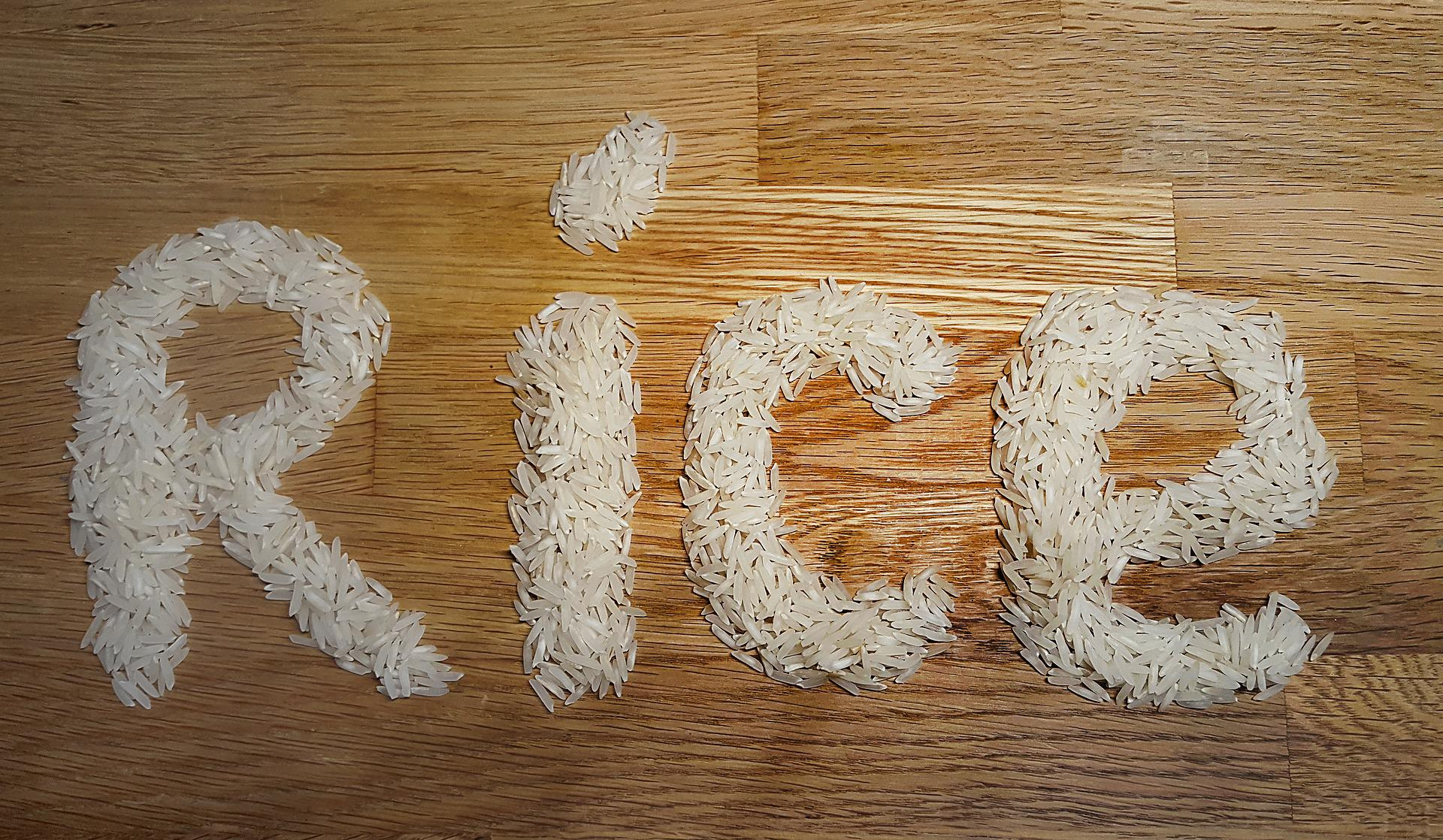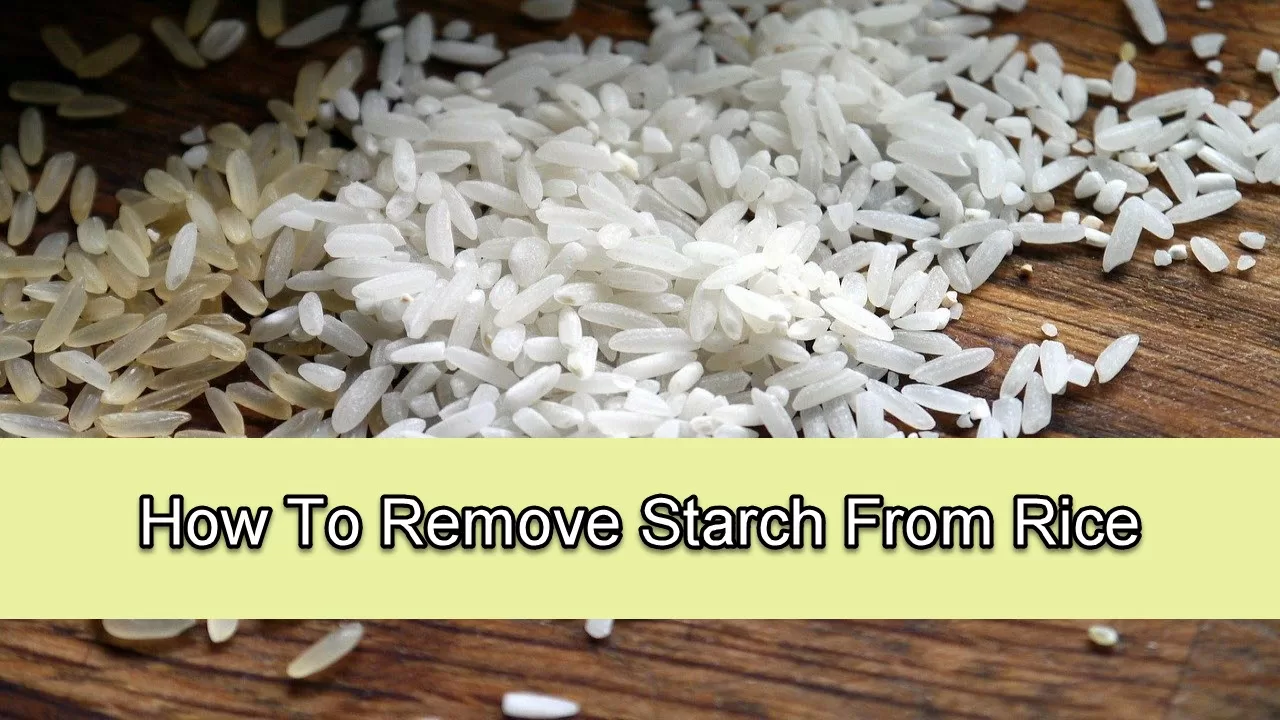
Rice has been a staple food around the world, especially in Asia where it is said that 90% of these grains are consumed on every meal. Rice is composed of carbohydrates and some essential nutrients like thiamine, riboflavin, iron, potassium and many more.
Rice can be eaten daily, but it can also be a concern for other people with ailments. Rice is relatively high in starch, especially when uncooked. For example, 100 grams or 3.5 ounces of uncooked rice contain 80.4 grams of carbs, of which 63.6% is starch.
White rice is linked to a higher risk of diabetes as it has more calorie content than other rice grains. A cup of cooked white rice contains about 200 calories that came from in the form of starch, which turns into sugar. If sugar is not metabolized properly, it often thereafter becomes body fat.
Remove Starch From Rice
How To Reduce Starch From Rice
Researches have been made to possibly reduce the starch content on the rice. What you will find below is an effective method to reduce calories and starch from rice.
Use Coconut Oil
Simply add 1 tablespoon of Coconut oil per 1 cup of rice while it’s cooking. Let the rice cool completely before eating. How does this method work? It is simple – a manipulation of chemistry.
Not all starches are created equal. Some digestible starches only need a little time to digest. They can be turned quickly into glucose, and then later glycogen. These excess glycogen can add up to the body fats if not burned and processed into energy.
On the other hand, resistant starch take a long time for the body to process. They are not converted into glucose or glycogen as we lack the ability to digest them. Having said that, these starches could only add up to fewer calories.
By modifying how rice is prepared, it can change the types of starches found in this food. By putting oil into the rice, it interacts with the starch in rice and changes its attributes. Chillin the rice after it has been cooked helps stimulate the conversion of starches. This would result in a healthier serving even after reheating the rice.
In chemical sciences, if you are able to reduce the digestible starch in something like steamed white rice, then most possibly you will be able to reduce the calories and it could create a huge impact on this food.
Washing The Boiled Rice
Washing the boiled rice and draining its liquid can help reduce most of the cooked rice starch content. Though, be reminded that this process can remove most of the healthy nutrients in the rice.
You can compensate for the lost nutrients by adding vegetables and lean protein like eggs, tofu, paneer, beans and soy products. You can cook rice and wash it to remove extra starch. Balance it by adding protein rich food such as dals, paneer, tofu and nutritious vegetables. There are recipes that also make delicious rice meals including kofta curry, kadi pakoda, sweet and sour honey lemon paneer, and/or chana dal with lauki.
One of the benefits if you cook rice then wash and drain it is that it could provide a soft fluffy rice with every grain separated. The rice will have no clumps, less starchy rice and non sticky rice.
Now you might question, will the calorie count go down by reducing starch? The answer would be no. This preparation can only reduce the starch but there would still be remaining starch in the food.
How to Cook Starch-Free Rice
Here is a recipe on how you can reduce starch by cooking rice. You will need to have:
- 1 cup Basmati Rice or any kind of rice
- 3 cups of water
- 5-6 pieces of cloves
- Optional Ingredients:
- Kosher Salt or any kind of salt
- 1 teaspoon Cumin seeds
Procedure:
- Get and measure 1 cup of rice. Wash the rice thoroughly under tap water. The right way to do that is to stir the rice in circles with your fingers or by gently rubbing the grains in between your fingers. Aside from removing the starch, doing this will also remove the dirt on the rice.
- Pour in 3 cups of water with the cloves in a pan and bring to a boil.
- Once it starts boiling, add rice and cook it on a medium heat for about 5 -6 minutes.
- A foamy and thick creamy liquid will start to float on top once the rice starts to boil. Remove and discard this starchy foam. Repeat this process until the starchy content starts to fade away.
- Keep on cooking until the water is reduced in quantity and rice grains start to float on top. Check the grain if it is already cooked by spooning out some rice. The grain of rice should feel soft and tender to indicate that it is ready.
- Remove the pan from the heat and carefully filter it through a strainer. Just run it under cold water to wash away all the starchy and cloudy liquid from the boiled rice.
- Wash for a minute on the cold water and gently run your fingers through the rice to rinse away any remaining starch. Make it very gently to avoid crushing the grains.
- On the same pan, transfer the washed rice back. Add 1/4 cup of water and cook it again under medium-low heat. If you have salt and cumin seeds, you can already add them. Note: You will need to do this procedure after washing the cooked rice to make them look fluffy. Cooking the rice again under medium-low heat for about 3-4 minutes will remove the stickiness and will turn it into fluffy grains with no clumps. You can also boil the rice under low heat and cover the pan with a clean cloth and place a lid over it. If you don’t have a cloth, you can also place a lid that covers the pan completely.
- Remove the pan from the heat and let it sit covered and undisturbed for 5-6 minutes. After that, remove the cloth and the lid carefully.
- Use a fork to fluff up the long- white -grain of rice with reduced starch. Enjoy the rice with your favorite dal recipe, curry, peas, or other favorite dishes and serve it on a large bowl. You can also add the coconut oil and chill it before eating to make the rice healthier.
You may have a grain-free kitchen, but you can still get some starches from rice. If you don’t want rice even after putting in some coconut oil, you can get starch from sweet potatoes, which is a healthier option.
If you have a condition that requires you to cut back on high glycemic foods like rice, potatoes, or breads, then you should look for ways to cook them in a certain way that could cut down the starch content. There could be other recipes that will allow you to prepare them that way without affecting the flavor or taste while providing a benefit to your health.

